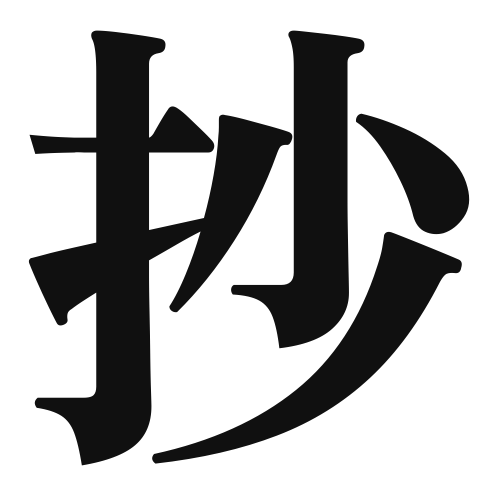1. Overview of Meaning
The kanji “抄” (shou) generally means “to extract” or “to select.” It is often used in contexts where information or content is summarized or taken from a larger source.
2. Formation and Radical
Formation of the Kanji: The kanji “抄” is a compound character (会意文字) that combines the elements of “手” (hand) and “少” (few), suggesting the action of taking a few things by hand.
Radical: The radical of “抄” is “手” (hand), which is commonly associated with actions involving the hands.
3. Examples of Usage
Common Words and Phrases: Some frequently used terms that include “抄” are “抄録” (shouroku – abstract or summary) and “抄本” (shouhon – a copy or excerpt).
Example Sentences in Daily Conversation:
- この本の重要な部分を抄録しました。 (I extracted the important parts of this book.)
- 彼は記事を抄本して、要点をまとめました。 (He summarized the article by extracting the main points.)
4. Synonyms and Antonyms
Similar Kanji: A similar kanji is “抜” (batsu), which also means “to extract” but often implies a more forceful action, such as pulling out or removing something.
Antonyms: An antonym for “抄” could be “全” (zen), meaning “whole” or “entire,” indicating the opposite of selecting or extracting parts.
5. Cultural and Historical Background
Relation to Japanese Culture: The concept of “抄” is significant in Japanese culture, especially in literature and academia, where summarizing and extracting key points from texts is a common practice.
Proverbs and Idioms: While there may not be specific proverbs that directly use “抄,” the practice of summarizing important information is often emphasized in educational contexts, reflecting the value placed on concise communication.
